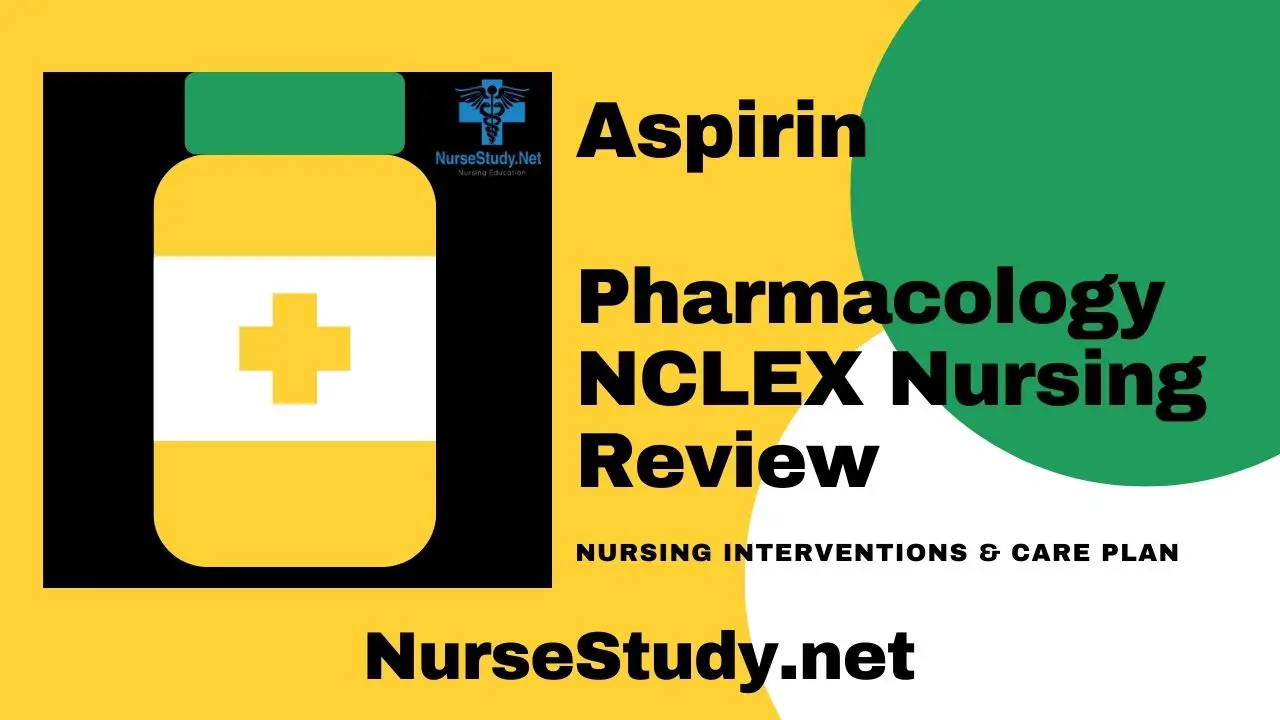Aspirin, also known as acetylsalicylic acid, is a widely used medication that plays a crucial role in managing various health conditions. As a healthcare professional, understanding the nursing considerations associated with aspirin administration is essential for providing optimal patient care. This comprehensive guide will explore the key aspects of aspirin, including its uses, mechanisms of action, and important nursing considerations.
Understanding Aspirin
Overview
Aspirin belongs to the class of medications known as nonsteroidal anti-inflammatory drugs (NSAIDs). It is commonly used for:
- Pain relief
- Fever reduction
- Anti-inflammatory effects
- Blood thinning (antiplatelet) properties
Pharmacological Details
- Generic Name: Acetylsalicylic acid
- Brand Names: Bayer, Ecotrin, Bufferin
- Pharmacologic Class: Nonsteroidal anti-inflammatory drug (NSAID)
- Therapeutic Class: Nonopioid analgesic, antipyretic, antiplatelet agent
Mechanism of Action
Aspirin works by inhibiting the enzyme cyclooxygenase (COX), which is responsible for producing prostaglandins. This action results in:
- Reduced inflammation
- Pain relief
- Fever reduction
- Inhibition of platelet aggregation
Indications for Use
Aspirin is prescribed for various conditions, including:
- Mild to moderate pain
- Fever
- Inflammatory conditions (rheumatoid arthritis)
- Prevention of cardiovascular events (heart attacks, strokes)
- Management of Kawasaki disease in children
Nursing Considerations
Assessment
Before administering aspirin, nurses should:
- Assess for allergies to NSAIDs or salicylates
- Evaluate pain levels using a standardized scale (e.g., 0-10)
- Check for contraindications, such as:
- Active bleeding disorders
- Peptic ulcer disease
- Severe liver or kidney impairment
- Review the patient’s medication history for potential interactions
- Assess vital signs, including temperature, if used as an antipyretic
Administration
When administering aspirin:
- Verify the correct dosage and frequency
- Administer with food or milk to reduce gastrointestinal irritation
- Do not crush or split enteric-coated or extended-release tablets
- Monitor for signs of bleeding or bruising
Monitoring
Nurses should closely monitor patients for:
- Efficacy in pain relief or fever reduction
- Signs of adverse effects, such as:
- Gastrointestinal discomfort or bleeding
- Tinnitus or hearing changes
- Unusual bleeding or bruising
- Changes in renal function, especially in long-term use
- Interactions with other medications
Patient Education
Provide comprehensive patient education, including:
- Proper administration techniques
- Potential side effects and when to seek medical attention
- Importance of adhering to prescribed dosage and frequency
- Avoiding alcohol consumption while taking aspirin
- Informing all healthcare providers about aspirin use
- Discontinuing aspirin before surgical procedures (as directed by a healthcare provider)
Precautions and Contraindications
Nurses should be aware of the following precautions:
- Avoid use in patients with known allergies to NSAIDs or salicylates
- Use cautiously in patients with a history of gastrointestinal bleeding or ulcers
- Monitor closely in patients with renal or hepatic impairment
- Avoid use in children with viral infections due to the risk of Reye’s syndrome
- Use with caution in pregnant women, especially in the third trimester
Drug Interactions
Aspirin may interact with various medications, including:
- Other NSAIDs or anticoagulants (increased bleeding risk)
- ACE inhibitors (reduced antihypertensive effect)
- Methotrexate (increased toxicity risk)
- Corticosteroids (increased risk of gastrointestinal bleeding)
Adverse Effects
Common adverse effects of aspirin include:
- Gastrointestinal disturbances (nausea, vomiting, abdominal pain)
- Increased bleeding risk
- Tinnitus or hearing changes (at higher doses)
- Allergic reactions (rare)
Conclusion
Understanding the nursing considerations associated with aspirin administration is crucial for providing safe and effective patient care.
References
- Awtry, E. H., & Loscalzo, J. (2000). Aspirin. Circulation, 101(10), 1206-1218. https://doi.org/10.1161/01.cir.101.10.1206
- Patrono, C., & Baigent, C. (2019). Role of aspirin in primary prevention of cardiovascular disease. Nature Reviews Cardiology, 16(11), 675-686. https://doi.org/10.1038/s41569-019-0225-y
- Schrör, K. (2016). Acetylsalicylic acid. John Wiley & Sons.
- Vane, J. R., & Botting, R. M. (2003). The mechanism of action of aspirin. Thrombosis Research, 110(5-6), 255-258. https://doi.org/10.1016/s0049-3848(03)00379-7
